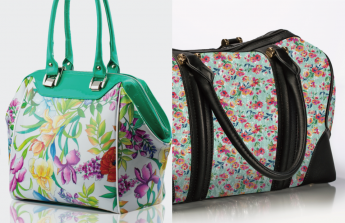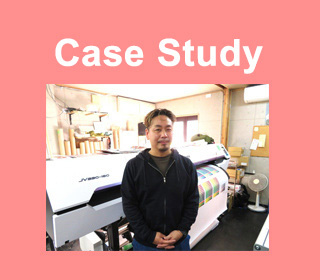
Mimaki Engineering explains the latest printing technology for fabrics and cloth. The sublimation transfer printer and the latest textile printing system, TRAPIS, will provide solutions to the current challenges of the textile industry.
The apparel industry is currently facing many challenges.
In the textile dyeing process in Japan, there is a noticeable problem of succession and employment due to the decrease in the number of craftsmen with expertise and experience.
In addition, the dyeing process of printing on cloth still causes environmental problems due to the pollution of rivers and the generation of large amounts of wastewater.
We need young people to take over the knowledge and experience, but we can't get any job offers.
Despite our own efforts, we have received complaints about wastewater from local authorities and residents in the neighborhood.
In fact, with the increase in environmental concerns and regulations, more and more businesses are becoming concerned about the continuation of their operations.
With such voices, digital textile printing is the solution to environmental issues and business challenges.
This article is recommended for those who
・Those who want to know about the latest systems in printing on cloth
・Those who are engaged in the cloth, textile, and dyeing industry and are facing challenges.
・Those who are currently considering replacing dyeing industry equipment for cloth, textiles, and fabrics.
Themes for 2030

Five directions have been identified as themes for the next generation of the textile industry.
・Creation of new earning power
・Aggressive entry into overseas markets
・Promotion of technological development
・SX (Sustainability, Transformation)
・Digitalization
Among these, I would like to focus on the creation of a new business model, SX (Sustainability Transformation), and digitalization.
The introduction of digital textile printers will enable the conversion of both of these at once.
Advantages of Digital Textile Printing
Digital textile printing is the process of dyeing cloth using a printer with a design (image or pattern) on a computer.
Generally, the design is printed directly on the cloth, or printed once on a special paper called transfer paper, and then transferred to the cloth.
This method has become remarkably popular in the apparel industry in recent years because it offers the following advantages.
(1) Because printing plates and ink preparation are not required, a wide variety of designs and colors can be used.
(2) The necessary items can be produced in necessary quantities, shortening lead time and reducing inventory risk.
(3) No printing plate cleaning is required, which reduces environmental impact and ensures worker safety.
In particular, as shown in the figure below, we are introducing a printing/transfer system that significantly shortens the conventional dye digital textile printing process.
We are introducing a printing and transfer system that greatly shortens the conventional dye digital textile printing process, as shown in the figure below.


Digital textile printing options
Dye‐based digital textile printing has become remarkably popular in recent years. While it is possible to print very vividly on fabrics, the types of fabrics that can be printed on are limited by the type of ink used in the printer,
However, the types of fabrics that can be printed on are limited depending on the type of ink used in the printer.
If you want to print on a wider range of fabric types, you will need as many printers as the number of ink types you need.
In addition, the pretreatment method (type and dosage of chemicals) and processes for vivid printing vary depending on the type of fabric, requiring a vast amount of specialized knowledge and preliminary testing.
Mimaki's Digital Textile Printing Made Easy
We offer sublimation transfer printers and textile pigment transfer printing systems that make digital textile printing easy.
①Dye sublimation transfer printer
Printer specialized for polyester fabric, which accounts for the majority of the textile industry.
Mainly for sports apparel, fast fashion, and soft sign applications
②New product: TRAPIS textile printing pigment transfer printing system
Prints on all types of fabrics with a single system

(1) Introduction of lineup of sublimation transfer printers
Click on the image to see a detailed video.

High-end models:Tiger600-1800TS
Examples of sublimation transfer printing applications
It is suitable for applications from printing on polyester and other fabrics to fashion apparel, sports apparel, and other garment applications. We also offer polyester interior fabrics and soft signs.



(2) TRAPIS, a system that can handle all fabrics with a single unit
Released in 2023. This system is a combination of our printer TS330-1600 and thermal transfer machine.
The greatest feature of this system is that it can be used for all kinds of fabrics with a single machine, which was considered to be difficult with digital textile printing.
This revolutionary system eliminates most of the conventional textile printing processes, enabling textile printing even in offices in urban areas with high land prices.
The unprecedented reduction of waste and shortening of delivery distance enables the realization of significant sustainability measures.
Click here for product details

Easy to implement as well as operate. Differentiation in initial cost as well.
A normal dye digital textile printing facility can cost tens of millions of yen for a complete set of equipment, including a printer, pre-treatment machine, steam machine, washing machine, and so on.
In addition, including wastewater treatment equipment in accordance with local ordinances, capital investment in the order of several hundred million yen is required.
Transfer printing, however, requires only a printer and a dedicated transfer machine and produces virtually no wastewater.
The system can be introduced immediately as long as the necessary space and power supply are available.
Examples of TRAPIS Applications
Currently, the materials that TRAPIS is particularly strong in are hemp and blended fabrics.
The setup of our heat transfer machines allows us to handle a wide range of chemical fibers, such as nylon, and we are also able to decorate patterns that have been difficult to create in the past, as well as to create small-lot, quick-delivery productions.
Nylon Fibers
Example of use in curtains

Mixed spinning (hemp/spandex)
Examples of Furniture and Coverings

Cotton and Polyester
Examples of bags and pouches

For all other materials and applications
All of the products in this image, including the wallpaper, were printed by TRAPIS.

Mimaki's Agata Technical Training Center specializing in printing on fabric
Mimaki Engineering has established the Agata Technical Training Center in Tomi-shi, Nagano Prefecture, a facility where all the printers and systems we have introduced can be viewed at once.
It is a special facility where visitors can see total testing of textiles, samples of creation, and experience Mimaki's latest technology.


Testimonials from customers who have toured our facilities
To businesses that are in the business of selling original wear considering purchasing a printer
"Since the DTF printer was released by Mimaki, it is possible to print on ready-made original T-shirts.
However, we could not print on the entire surface of the T-shirt or create T-shirts for outdoor use that contain nylon in the fabric. This was a factor in choosing a printer that could handle what we wanted to produce in-house after looking at a variety of products.
We also visited the latest TRAPIS system, which is capable of printing from the raw material of the fabric, and I found it attractive because I thought it could handle fabric selection and designs in line with the trends of the times.”
A sports apparel manufacturer business operator who viewed TRAPIS
"We were very surprised to come across a system like TRAPIS, given the demand for sustainable manufacturing. We have been dealing mainly with polyester fabrics and felt that we could handle complex designs in small lots for materials other than polyester. We are looking forward to hearing more about it in the future before deciding to implement it.”
Inquiry
At Mimaki Engineering, our sales staff is ready to assist you.
Please feel free to contact us if you need a quotation or would like to know how to make a profitable purchase using subsidies.
If you would like to request a visit to the Mimaki Technical Center, please click here to make an inquiry.









